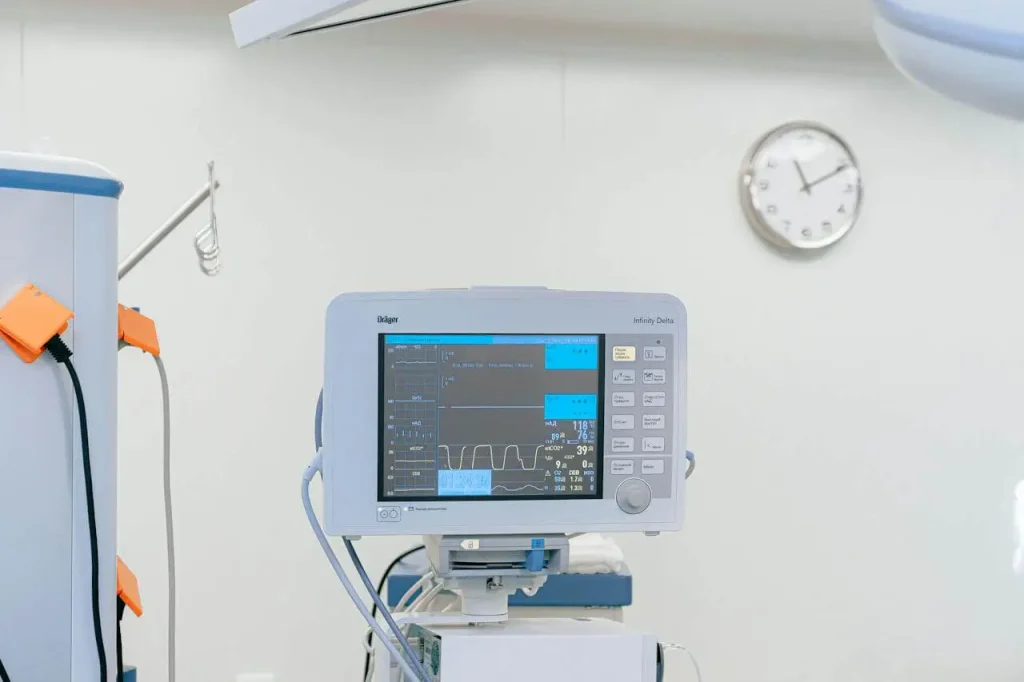Which Team Role Keeps Track of Interruptions in Compressions?

In the fast-paced domain of emergency response, where every second holds immense significance, the resuscitation team emerges as a beacon of hope during life-threatening situations like cardiac arrests and other severe issues. Today we’ll share a guide on which team role keeps track of interruptions in compressions.
Within this well-coordinated team, each member assumes a vital role, yet one specific responsibility often raises questions – the individual entrusted with monitoring interruptions during chest compressions.
In the intensity of a cardiac arrest, the effectiveness of CPR becomes a lifeline between life and death. A seamlessly coordinated resuscitation team is instrumental in navigating these critical moments, instilling hope, and increasing the likelihood of a positive outcome.
So, this article on which team role keeps track of interruptions in compressions aims to shed light on this often-overlooked role and provide a comprehensive understanding of its significance. To cultivate a more comprehensive understanding, let’s explore the roles within a resuscitation team and the nuances of interruptions during compressions.
What’s Resuscitation Team?
During emergency medical responses, a resuscitation team comprises a group of skilled healthcare professionals trained to act swiftly and efficiently during critical situations, with a primary mission to provide immediate medical care, especially during cardiac arrests. This diverse team, including doctors, nurses, and paramedics, converges with a shared purpose – to save lives.
Time Recorder’s Role
Within the resuscitation team, the crucial responsibility of monitoring interruptions during chest compressions falls on the “Time Keeper/Recorder.” This dedicated team member is entrusted with closely tracking the duration and frequency of any breaks during chest compressions, ensuring a more effective and efficient CPR process.
Recognizing the paramount importance of this process to the survival of the victim, it’s not uncommon for individuals to seek answers to the question, ‘Which team role keeps track of interruptions in compressions?’ For those in a hurry, the answer lies with the time recorder, a role integral to the success of the entire team.
Understanding Interruptions in Compressions

CPR involves rhythmic chest compressions to circulate blood and maintain vital organ function. Interruptions in compressions refer to breaks or pauses in this life-saving process, stemming from various reasons such as changing rescuers, checking for a pulse, delivering medication, or shifting the patient.
While some interruptions are necessary, excessive or prolonged breaks can significantly impact the patient’s chances of survival.
The Seven Team Roles
Apart from the time recorder, a resuscitation team comprises seven key roles, each contributing uniquely to the overall success of the life-saving mission:
- Team Leader
The central authority directs and coordinates the entire resuscitation process.
- Airway Manager
Ensures the patient’s airway is open and unobstructed for effective oxygenation and ventilation.
- Extra Member
Provides additional support for tasks requiring extra assistance.
- IV Medication Provider
Administers intravenous medications crucial for stabilizing the patient.
- Compressor
Executes chest compressions, the primary means of circulating blood during CPR.
- Defibrillator Operator
Handles the vital task of delivering electrical shocks to restore normal heart rhythm.
- Time Recorder
Monitors interruptions during chest compressions, ensuring continuity for an effective CPR process.
The Dynamics of Multi-Rescuer CPR
In multi-rescuer CPR scenarios, roles are typically designated by the team leader, a healthcare professional experienced in managing critical situations. Effective leadership and clear communication become essential, ensuring each team member optimally contributes based on their expertise.
Teamwork and Communication Tips
Enhancing coordination and efficiency during CPR involves several key principles:
- Assign Clear Roles
Ensure each team member is assigned a specific role based on their expertise for a coordinated and efficient resuscitation effort.
- Effective Leadership
Designate a competent team leader to provide direction, make informed decisions, and maintain a calm environment.
- Open Communication
Foster transparent and open communication among team members for effective information sharing.
- Closed-Loop Communication
Implement closed-loop communication to prevent misunderstandings and ensure everyone is on the same page.
- Shared Awareness
Keep the entire team informed about the patient’s status and changes in the resuscitation plan to facilitate seamless teamwork.
- Regular Check-Ins
Encourage periodic check-ins during CPR to reassess roles and address any arising issues.
- Support and Respect
Provide support and respect to all team members, recognizing the significance of their roles in the life-saving effort.
FAQs
Final Thoughts
As we conclude this exploration into the intricate world of resuscitation teams, it’s clear that the time recorder, though often unsung, plays a pivotal role in the success of CPR efforts. We hope this guide on which team role keeps track of interruptions in compressions will be beneficial for you.
Their diligence in minimizing interruptions during chest compressions is a testament to their importance in the race against time. If you still have questions or concerns about the subject, feel free to drop us a message below – we’re here to help. If you like this article, click here to read about who is not a good candidate for ketamine therapy.






